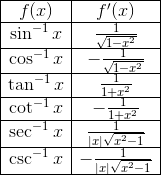I don’t have to be a psychologist or psychiatrist to know that if you’re reading this article, it’s likely you’ve signed up to take AP Psychology next year. As an AP Psychology veteran, I can truthfully say that it was one of the most enjoyable AP classes I took in high school. From Pavlov to Milgram, Psychology is a fascinating subject that everyone should learn about.

The exam has undergone a few revisions since I took it in May 2003, so in this article, I’m providing you with the most up to date information about the May 2017 test. My goal is to go in-depth with everything you’ll see on test day and offer some tips that will hopefully have you earning a score of 4 or 5.
As this article is long, here is a table of contents if you just want to learn something specific about the Exam:
- How You’re Assessed on the Exam
- Successful Time Management
- Test Content: Section I (Multiple Choice)
- Test Content: Section II (Free Response Questions)
- The End
How You’re Assessed on the Exam
The AP Psychology Exam is a two-hour exam that assesses what you learned during the course of your AP Psychology class. To earn a 5 on the exam, you need to master the following 14 learning objectives. Also included are the percentages of test questions you can expect about each objective.
- History and Approaches to Psychology (2-4%)
- Research Methods (8-10%)
- Biological Bases of Behavior (8-10%)
- Sensation and Perception (6-8%)
- States of Consciousness (2-4%)
- Learning (7-9%)
- Cognition (8-10%)
- Motivation and Emotion (6-8%)
- Developmental Psychology (7-9%)
- Personality (5-7%)
- Testing and Individual Differences (5-7%)
- Abnormal Behavior (7-9%)
- Treatment of Abnormal Behavior (5-7%)
- Social Psychology (8-10%)
At first glance, 14 learning objectives doesn’t seem like a lot. Yet each one comprises 5-10 major topics. If I were teaching AP Psychology, I would dedicate at least two weeks of class time to each learning objective. Therefore, each one is really important.
Successful Time Management
In this section I will break down the length of the AP Psychology Exam, and offer suggestions on how to make sure you successfully finish each section of the test. First a piece of recycled advice from my ACT articles: take multiple timed practice tests to become used to the tests format, content, and pacing. For students with a College Board account, a full-length test is available for you to take. Also, please remember that the exam underwent a revision in the fall of 2014. Though study materials from before 2014 are available on the AP Psychology course website, they are not as reliable as those dated 2015 or 2016.
Section I: Multiple Choice (100 Questions, 70 Minutes, 66.6% of Total Exam Score)
First, take a look at my article on ACT Time Management. The same basic rules apply to the AP Psychology Exam’s multiple choice-section. You have exactly 42 seconds to answer each question. Fortunately for you, the AP Psychology Exam is graded the same way as the ACT. Only correct answers count. If you’re stuck on a question and 42 seconds have passed, it’s time to guess and move on.
Now, I understand that it’s impossible to exactly time 42 seconds, especially in a high-stress environment like an AP Exam. There are ways to get around this. In short, check how many questions you have answered at the end of 10 minutes. If you’ve answered 12 questions, you’re on track. Any less than that and I’d recommend more practice tests between now and test day to improve your time and confidence.
Break (10 Minutes)
Break is an important part of any AP Exam. Even though the AP Psychology Exam is only two hours long, don’t waste your break. Visit the restroom and drink a little water. But most importantly, eat something! Section II requires a lot of brain power.
Section II: Free Response (2 Questions, 50 Minutes, 33.3% of Total Exam Score)
The Free Response section has two questions, each worth 16.67% of your exam score. Divide 50 minutes by two and you get 25 minutes per question. Unfortunately, it gets a bit more complicated. Each question has a Part A and a Part B. So, in summary, you have 50 minutes to perform 4 tasks.
Having spent many years as a student and then teacher, here are my two cents on how to best use your time.
- First 10-12 minutes: Planning your replies.
- Read the directions and underline what the graders expect of you.
- Read the prompts and brainstorm ideas on the test booklet.
- For each A/B part, come up with a thesis statement.
One thing I want to note is that when I say ‘thesis statement’ I don’t mean ‘thesis statement for a five paragraph essay.’ You don’t have enough time to write four of those. Your goal is to write a bare bones response. That means barely any introduction other than the thesis and no conclusion.
- Last 38-40 minutes: Write your responses.
If you’re following the directions, you’re golden. I mention this because there have been many smart AP students who have written off topic, and earned a dreaded low score.
Now that we’ve talked about time management, let’s talk about what to expect on the test.
Test Content: Section I (Multiple Choice)
Even though the exam in its current form is only two years old, multiple-choice questions from previous years’ AP Psychology Exams are still a valid way to practice for test day. If your teacher knows what he or she is doing, you will see old exam questions on just about every one of your unit tests.
The multiple-choice questions will test your Psychology knowledge in a variety of different ways. Unlike other AP Exams, none of the questions will be grouped together. Some questions are straight memorization questions, while others will ask you to analyze a short paragraph or graph.
One last thing about time management: Considering that the multiple-choice questions are structured this way, students who have experienced time management issues on other standardized tests should not have as much a problem on the AP Psychology Exam.
Test Content: Section II (Free Response Questions)
Like some of the questions on the multiple-choice section, to answer the Free Response questions you will need to analyze a scenario or psychology experiment. The first ten minutes are the most important; mark up your test and make comments in the margins. Organizing your thoughts during this important time will save you as the time crunch sets in later.
Unlike the AP English Literature Exam, for example, the writing section on the AP Psychology Exam doesn’t ask you to produce different types of writing. For example, think back to your English classes. The difference between ‘short answer’ and ‘essay’ is more than just the number of words. Essays have introductions, conclusions, and transition sentences. Fortunately, you do not need to worry about these type of writing conventions on the AP Psychology Free Response Section.
After taking a practice test or two, you discover that each question is actually two smaller questions, Part A and Part B.
But how much is enough to answer each part? Three sentences? A whole paragraph? In my time I’ve taught a lot of subjects, and no matter what type of writing you’re doing, it all boils down to three steps (aka the Jane Schaffer Method):
- Answer the question in your first sentence.
- Back your answer up with sufficient evidence.
- Connect your evidence with your answer through personal analysis.
In short, both parts of each question require this level of writing. Therefore, I recommend writing a large paragraph for each A/B part. Remember, it doesn’t need to look pretty. It just needs to do everything the directions and prompt ask.
The End
AP Psychology is course traditionally taken by 11th grade students. After the exam is over, your last summer break of high school begins and you’re out there flipping burgers or sunning by the pool. No matter what, around this time (that is, early July), something momentous will happen.
The College Board releases AP Psychology Exam scores.
Yes, if you earn a 4 or 5 you can likely skip Psychology 101 your freshmen year of college. Take it from me, it’s quite nice to start your college experience by not having to sit in a class with 300 other people.
Well Magooshers, I hope you’ve learned a little about the AP Psychology Exam. It’s an exciting course with a lot to learn, so rest up over the summer. Till next time.





Leave a Reply